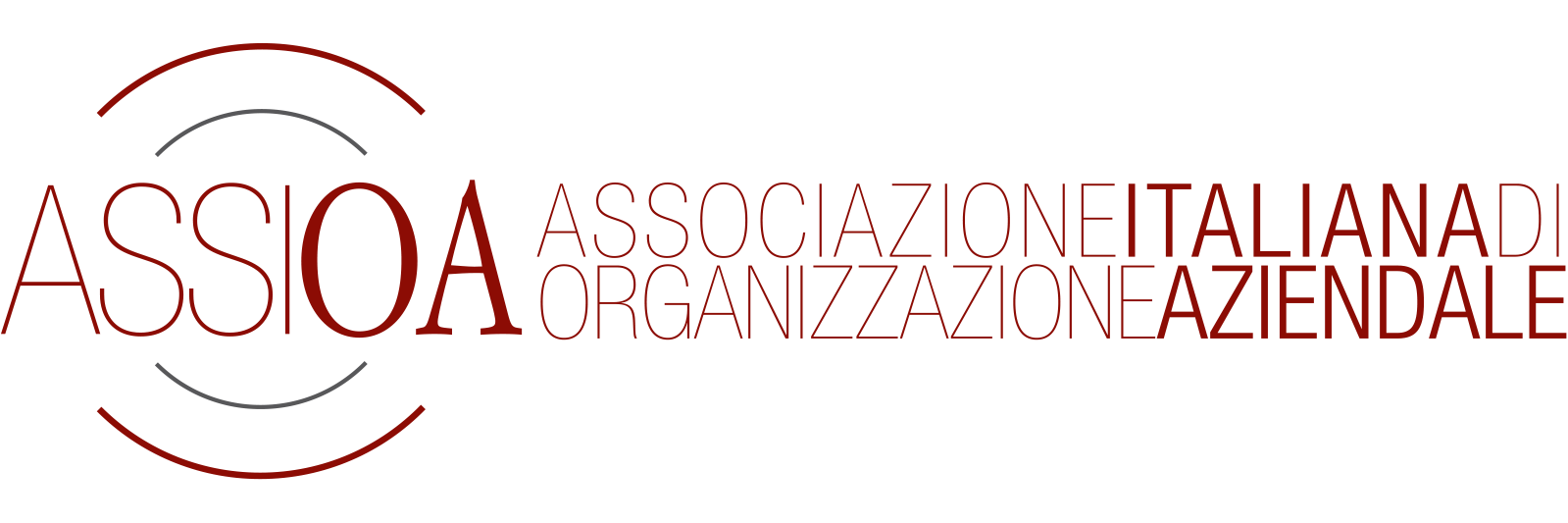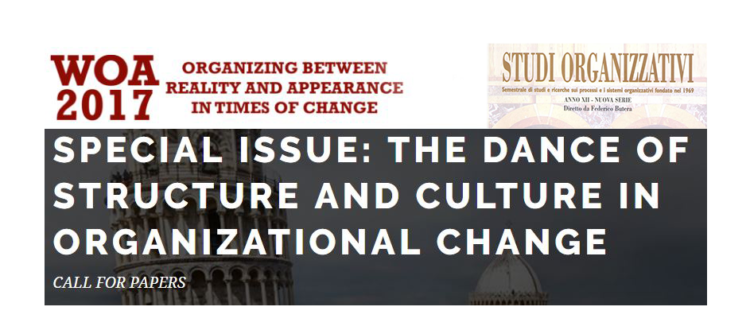WOA 2017 Special Issue: The Dance of Structure and Culture in Organizational Change
The study of change and development is one of the great themes in the social sciences, and a large number of scholars from different disciplines has devoted time and effort to the study of development, transformation, decline, and regeneration of human systems. Organization studies make no exception. Since the seminal model of Lewin (1951), in fact, organizational change has been one of the most central research theme in the discipline (e.g., Alvesson & Sveningsson, 2015; Armenakis & Bedeian, 1999; Porras & Silvers, 1991). Recent economic, technological and political changes have increased the complexity of the environmental conditions in which organizations operate, making the ability to cope with the ever changing contextual conditions a key determinant for organizational survival and success (D’Aveni, 2010; McKinley, Latham & Braun, 2014).
This special issue aims at understanding the interplay of processual and structural nature of change. In particular, we seek contributions that analyze the content, action, and process of change when a new structure of business, organization, technology, composition of work generate new paradigms. For instance, which kind of change process is associated in the dramatic cases where the traditional division of labor in the assembly lines has been replaced with the creation of semiautonomous work groups? Which kind of change processes is appropriate in developing non hierarchical organizations? Which process in developing the NASA x teams, moving to secrete military research center to largely autonomous teams in continuous transaction with cosmopolitan scientific communities? Moreover change processes and new system changes should be seen together with their interconnection with contexts over time. Besides the important role played by the outer context, i.e. the economic, social, political, and sector environment in which an organization operates, we especially welcome contributions that investigate the role of the inner context discussing the relationship between the structural and the cultural elements. Indeed, structures and culture are two elements strictly intertwined in change processes and while there is high consensus around the idea that successful change depends on the ability to manage the hard (i.e. organizational structures) and the soft (i.e. organizational culture) side of change jointly, organizational studies have largely investigated them as separate, independent change elements.
Investigating organizational change under this perspective arise questions about the role of history, structure, cultures, power, and politics in enabling and constraining change. We believe that a deeper understanding of how change happens and why some change processes are more effective than others demands a (critical) reflection on these elements. Indeed, change explanations are increasingly viewed as an interaction between context and action, where the inner context could be interpreted as a “nested arrangement of structures and processes in which the subjective interpretations of actors’ perceiving, learning, and remembering help shape process” (Pettigrew, Woodman & Cameron, 2001: 699).
Specific questions include but are not limited to:
- How do the hard and the soft side of change interact in successful (and unsuccessful) change initiatives? Who are the key organizational actors for the management of the hard and the soft side of change? How do they interact?
- Which kind of change management process is appropriate when new paradigms of organization are introduced?
- When we can define successful a change process? How the inner context may lead to success in the management of change in terms, for instance, of quantity, quality, and pace of change?
- How and why do variations in inner contexts shape variability in change process and in the related performance outcomes? Is there any difference between the case of episodic and discontinuous changes vs those that are continuous and evolving? And between incremental and radical change?
- Which new aspects and elements should be considered for understanding change in ever changing environments? What are the new challenges for organizations operating in such environments?
- What are the specific challenges that organizations face in managing change process in contemporary time of change when new digital platforms blur the boundaries between inner and outer context?
The special issue is open to a diverse set of theoretical and empirical methodologies as well as to a range of empirical settings. Both qualitative and quantitative empirical approaches as well as conceptual and theoretically focused contributions are welcomed.
Visit WOA 2017 website for more information: woa2017.assioa.it



